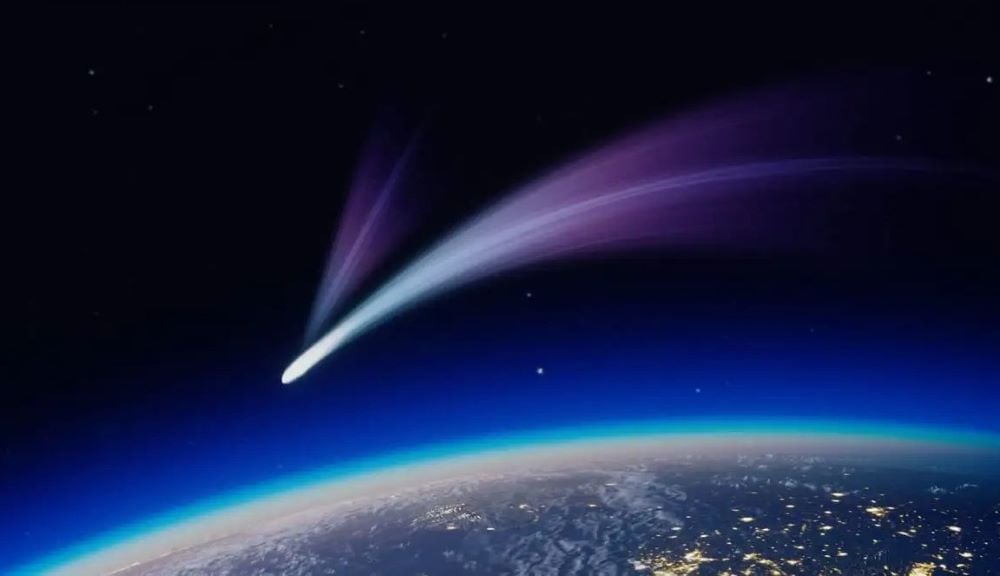Comet C/2024 G3 (ATLAS) Dazzles Near the Sun

In mid-January 2025, the astronomical community was abuzz with excitement as comet C/2024 G3 (ATLAS) made its closest approach to the Sun. This celestial event, occurring just 8 million miles from our star, provided a spectacular display that was captured by the Solar and Heliospheric Observatory (SOHO), a joint mission of NASA and the European Space Agency (ESA). The images revealed the comet brightening and its tail extending dramatically as it navigated through the Sun’s intense environment. This event not only captivated stargazers but also offered scientists a unique opportunity to study the interaction between the solar wind and the comet’s tail, shedding light on solar activity.
Details of the Observation
The observation of comet C/2024 G3 (ATLAS) was meticulously conducted from January 11 to January 13, 2025, using the Large Angle and Spectrometric Coronagraph (LASCO) instrument aboard the SOHO spacecraft. This sophisticated instrument blocks out the Sun’s light, allowing researchers to observe fainter details of the solar corona. During its perihelion on January 13, the comet’s head became exceptionally luminous. This brightness was so intense that it briefly overwhelmed LASCO’s sensors, resulting in horizontal streaks in the imagery, a phenomenon known as “bleeding.”
The LASCO instrument has been pivotal in tracking comets since its launch, contributing to the discovery of over 5,000 comets. The data collected during this observation period is invaluable for understanding the behavior of comets as they interact with solar radiation and the solar wind. The images not only showcase the comet’s beauty but also serve as a critical resource for scientists studying the dynamics of solar and heliospheric phenomena.
Scientific Significance
The scientific implications of comet C/2024 G3 (ATLAS) are profound. Karl Battams, the principal investigator of LASCO at the U.S. Naval Research Laboratory, emphasized the importance of this event in a recent press release. He noted that the comet’s tail exhibited noticeable responses to fluctuations in the solar wind. These reactions are crucial for understanding how the Sun influences nearby celestial objects.
The study of comets like ATLAS helps scientists gain insights into the solar system’s dynamics. The interaction between the solar wind and the comet’s tail can reveal information about solar activity and its effects on comets. This research is essential for predicting how solar events might impact Earth and other planets. As LASCO continues to monitor the cosmos, it remains a vital tool in the field of solar and heliospheric studies, contributing to our understanding of the universe.
Visibility and Current Status
As comet C/2024 G3 (ATLAS) approached the Sun, it became briefly visible in the Northern Hemisphere after sunset. However, as the comet has now begun to recede from its closest approach, it is best observed from the Southern Hemisphere. Astronomers have raised concerns that the comet may have fragmented during its solar encounter. This fragmentation could lead to a rapid dimming of the comet in the coming days, making it more challenging to observe.
The SOHO mission, a collaborative effort between NASA and ESA, continues to provide valuable data on solar phenomena and comets. With mission operations led by NASA’s Goddard Space Flight Center, SOHO remains at the forefront of solar research. As scientists analyze the data from comet ATLAS, they hope to uncover more about the intricate relationship between comets and solar activity, further enriching our understanding of the cosmos.
Observer Voice is the one stop site for National, International news, Sports, Editor’s Choice, Art/culture contents, Quotes and much more. We also cover historical contents. Historical contents includes World History, Indian History, and what happened today. The website also covers Entertainment across the India and World.

